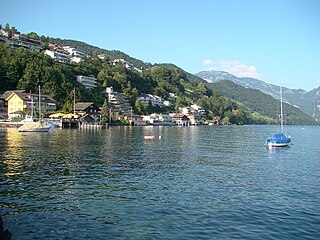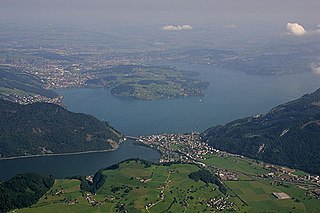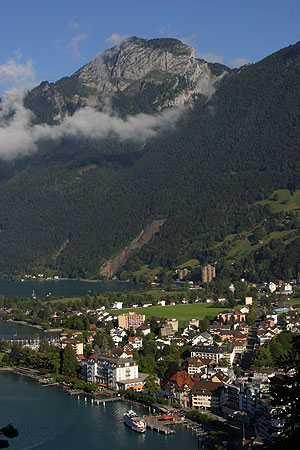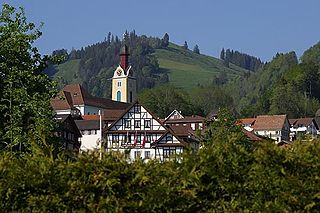
The canton of Lucerne is a canton of Switzerland. It is located in the country's central, German-speaking part. The population of the canton is 416,347. As of 2007, the population included 57,268 foreigners, or about 15.8% of the total population. The cantonal capital is the city of Lucerne.

Stans is the capital of the canton of Nidwalden (Nidwald) in Switzerland.

Engelberg is a village resort and a municipality in the canton of Obwalden in Switzerland. Alongside the central village of Engelberg, the municipality encompasses additional settlements, including Grafenort, Oberberg and Schwand.

Nidwalden or Nidwald is one of the 26 cantons forming the Swiss Confederation. It is composed of eleven municipalities and the seat of the government and parliament is in Stans. It is traditionally considered a "half-canton", the other half being Obwalden.

Beckenried is a municipality in the canton of Nidwalden in Switzerland.

Emmetten is a municipality in the canton of Nidwalden in Switzerland.

Ennetbürgen is a municipality in the canton of Nidwalden in Switzerland.

Ennetmoos is a municipality in the canton of Nidwalden in Switzerland.

Hergiswil is a municipality in the canton of Nidwalden in Switzerland.

Oberdorf is a municipality in the canton of Nidwalden in Switzerland. It consists of the villages and hamlets of Wil, Ennerberg, Waltersberg, Büren nid dem Bach and Niederrickenbach.

Stansstad is a municipality in the canton of Nidwalden in Switzerland.

Wolfenschiessen is a village and municipality in the canton of Nidwalden in Switzerland. Besides the village of Wolfenschiessen itself, the municipality includes the settlements of Altzellen, Büren ob dem Bach, Dörfli, and Oberrickenbach, together with a large area of high alpine land, mountains, lakes, and glaciers.

Rudolfstetten-Friedlisberg is a municipality in the district of Bremgarten in the canton of Aargau in Switzerland. Prior to 1953, the municipality was officially known simply as Rudolfstetten.

Horw is a municipality in the district of Lucerne in the canton of Lucerne in Switzerland.

Ingenbohl is a municipality in Schwyz District in the canton of Schwyz in Switzerland.

Rothenthurm is a municipality in Schwyz District in the canton of Schwyz in Switzerland.

Sattel is a municipality in Schwyz District in the canton of Schwyz in Switzerland. Its name is the German word for "saddle".

Hasle is a municipality in the district of Entlebuch in the canton of Lucerne in Switzerland. Hasle is part of the UNESCO Entlebuch Biosphere Reserve since 2001.

Alberswil is a municipality in the district of Willisau in the canton of Lucerne in Switzerland.
Menznau is a municipality in the district of Willisau in the canton of Lucerne in Switzerland.
























